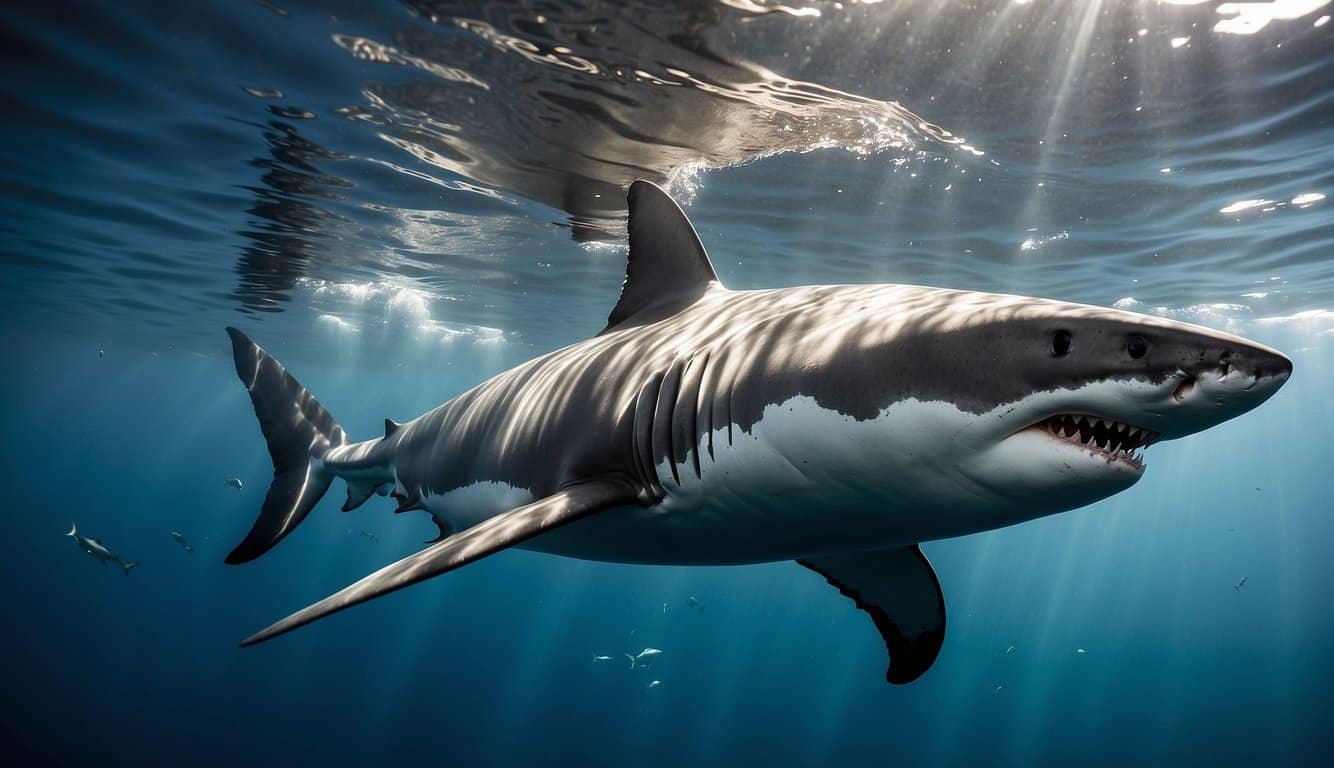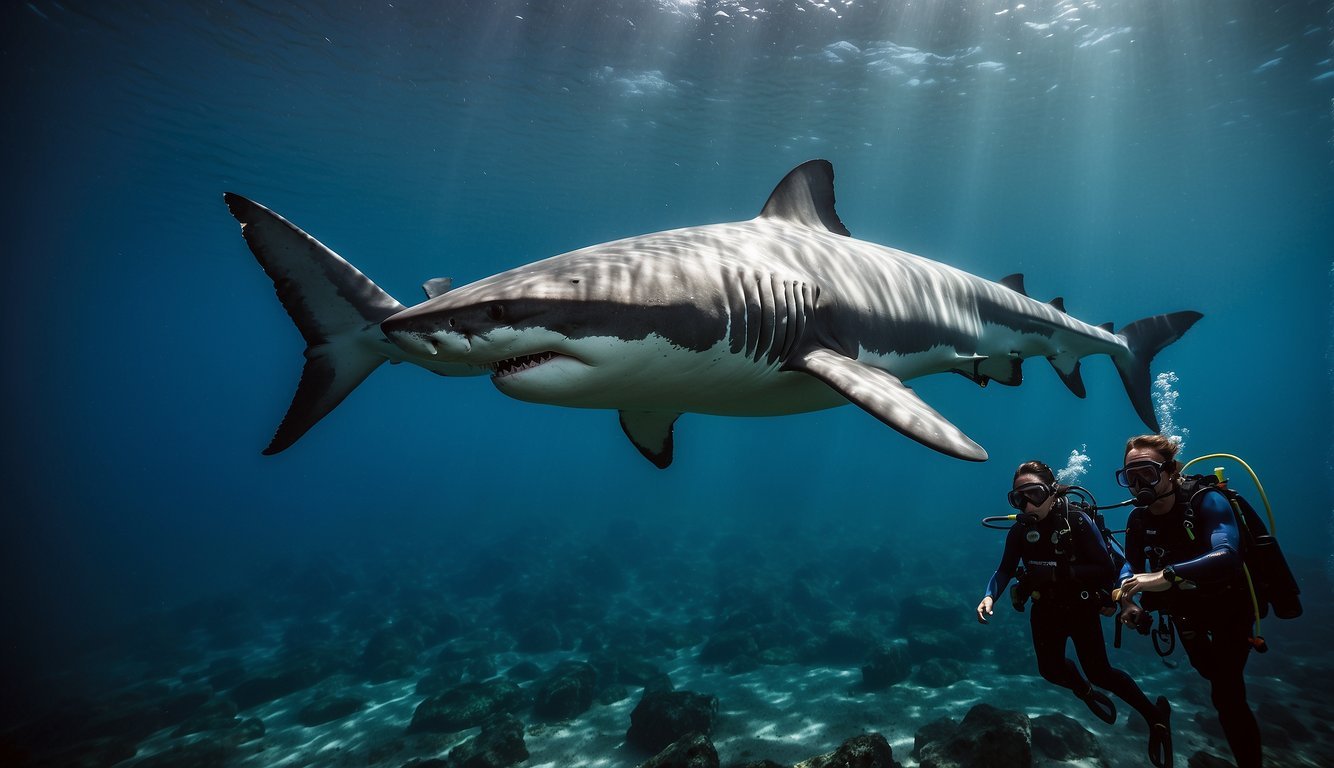Great White Shark Habitats
Great white sharks are most frequently found in coastal and offshore waters where temperature and food sources are optimal.
Temperate Ocean Regions
Great white sharks make their homes in many temperate ocean regions around the globe, where water temperatures tend to be between 12 to 24 degrees Celsius. Notably, large populations are found close to the coasts of the United States, Australia, and South Africa, as well as the Mediterranean Sea. These regions offer abundant food sources such as marine mammals, which are key to their survival.
Migration Patterns
Great white sharks are highly migratory, displaying complex movement patterns that often lead them across vast pelagic zones of the open ocean. For example, tagging studies show white sharks migrating between California and the Hawaiian Islands. They navigate these long distances to take advantage of different ecosystems that offer varied prey, demonstrating adaptability within different oceanic habitats.
Habitat Protection
Conservation efforts worldwide aim to protect great white shark habitats to ensure their populations remain sustainable. Various regions have recognized the importance of these apex predators in marine ecosystems and have implemented protections, especially in places where sharks are most vulnerable. Australia, the United States, South Africa, and the Mediterranean have all taken measures to regulate trade and fishing, creating a safer environment for these majestic creatures.
Biology and Behavior of Great Whites

Great white sharks, often simply referred to as white sharks, are among the most renowned predatory fish in the ocean. Adults typically reach lengths of 15 to 20 feet and can weigh up to 5,000 pounds, positioning them as one of the largest predators in the marine realm. They boast robust, torpedo-shaped bodies and powerful jaws lined with multiple rows of serrated teeth perfect for seizing their favored prey—seals and sea lions.
Understanding the biology of these apex predators reveals a refined set of senses. Their vision is adapted to the dim light of the ocean depths whereas their extraordinary sense of smell can detect a single drop of blood in 25 gallons of water. This olfactory prowess plays a crucial role in hunting, allowing them to pick up on the faint trails left by prey over considerable distances.
Great whites exhibit a fascinating behavior known as breaching, where they propel themselves out of the water, often to surprise their prey from below with formidable speed. Their diet is not limited to marine mammals; they also consume fish, rays, and even other sharks. Juveniles tend to feed on smaller prey such as fish and rays until they grow large enough to tackle more substantial meals.
Reproduction in great white sharks is somewhat enigmatic, but they are known to be ovoviviparous, with embryos growing inside the female and feeding off unfertilized eggs. Their lifespan averages around 70 years, though this can vary based on environmental conditions and threats from human activities.
Despite their portrayal as mindless predators, white sharks are a critical component of marine ecosystems, helping maintain the balance by controlling the populations of other species. They do this not just with brawn but with a complex set of behaviors that illustrate an animal adapted perfectly to its environment.
For a deeper understanding of the biology and behavior of great whites, the study on the mechanics of biting in great white and sandtiger sharks provides valuable insights into how their jaws function. To explore the roots of human attitudes towards these misunderstood creatures, an analysis on the conservation of great white sharks is quite enlightening.
Conservation and Human Interaction

Great white sharks (Carcharodon carcharias), often portrayed as fearsome predators, are actually a vulnerable species facing the threat of extinction. The International Union for Conservation of Nature (IUCN) has listed these majestic creatures as vulnerable due to various factors, including unintended capture by fisheries (bycatch), entanglement in nets, and targeted hunting for their jaws and fins.
Conservation efforts are crucial to protect great white shark populations, which have a significant impact on marine ecosystems. Several countries have implemented regulations under the Convention on International Trade in Endangered Species (CITES) to control the trade of great white sharks and their parts. These regulations aim to reduce illegal trade and to ensure that any trade is sustainable and does not threaten their survival.
Human interactions with these sharks often involve activities such as swimming, diving, and organized cage-diving tours. When conducted responsibly, these encounters can shift public perception and increase awareness of the species’ importance. For instance, research on white shark cage-diving tours suggests that direct experiences with sharks can change the negative attitudes towards them and highlight the importance of their preservation.
With respect to safety, shark attacks are extremely rare, and many incidents result from curiosity rather than predatory behavior. Great white sharks display a high level of intelligence, and as apex predators, they play a key role in maintaining the balance of marine life. Through conservation action and respectful human-shark interactions, it’s possible to ensure the continuation of these extraordinary animals for generations to come.

